Context (History and/or Artists)
Expressionism is a style of Modern Art that doesn’t show the way things look in real life, but how these things make the artist and hopefully, the viewer, feel. Sizes, angles and colors can be over-the-top to elicit an emotional response. It started in Germany in the late 1800s/early 1900s. It was a time of turmoil in Europe and artists wanted people to admit the feelings that went along with it. With the invention of the camera, artists were free to create abstract art, not just show the world the way it really looks.
- Edvard Munch: Born in 1863, he was a Norwegian painter and printmaker. He used intense colors, shapes and lines to show his feelings. He is best known for his painting called, The Scream. This painting shows anger, frustration, and fear.
- Vincent Van Gogh: Born in 1853, he was a Dutch painter. He used bold colors and dramatic brush strokes to show his feelings. A painting that shows this best is, “A Starry Night.” With twirls of clouds, dark structures, moons, planets and winds, this painting clearly shows that the artist was confused, frustrated, anxious, and contemplative.
- Pablo Picasso: Born in 1881, he was a Spanish painter, printmaker, sculptor, and poet. He used drawings, lines, textures and colors to show his feelings in his art. “Guernica” is a great example of how he painted his feelings. This painting is black and white. It shows his anger and sadness about something that happened. It has hard lines and soft lines that show his confusion.
- Georgia O’Keefe: Born in 1897, she was an American artist known for painting enlarged flowers. She painted flowers, rocks and water to show her feelings. Her painting, From the Lake, is a beautiful painting showing a smoothly flowing lake. It shows calmness, hope.
Advanced Preparation
Find a good image of Munch’s The Scream (see below) and make or use the poster below of facial expressions. If choosing more Expressionist art, select non-scary ones to suggest other simple emotions: eg Franz Marc’s Dog Lying in the Snow might suggest contentment.
Tips & Tricks
- Have extra paper for students who work quickly. It’s better to make too many and choose the best ones.
- Don’t let students pour their own paints.
- Assign a brush to a color to discourage color mixing.
- 1st graders have limited fine motor control and large shapes and lines are best.
- Monitor the way they load the brush with paint so there’s not too much being used.
- Don’t label any color with an emotion. Let students choose what’s personally meaningful.
Discussion Points
- Post above vocabulary, briefly talk about it and use the words during the lesson.
- When discussing Expressionism, keep it simple and not too scary. All feelings/emotions are worthy of showing in art, even the upsetting ones. Sometimes expressing our feelings in safe ways helps us understand and get them under control.
Lines
- A dark, thick, angled line can show anger or being mad
- A thin, flowing, rounded line can show happiness
Shapes
- Squares, triangles and rectangles can show anger, fear, confusion
- Ovals can show sadness
- Circles can show happiness and joy
Colors
- Red can mean anger or love
- Pink can mean love or cheerful
- Blue can mean sadness or calm
- Green can mean good energy, soothing, calm and safety
- Yellow can mean cheerful and good energy
- Orange can mean happiness and healthy
- Purple can mean sadness, disgust and mystery
Reflection Point (Assessment of Learning Objectives)
Students will:
• Observe Expressionist art.
• Explore how artists show/express emotions through art.
• Express 2 or more emotions visually.
Instructions for Lesson
- Post the vocabulary and give simple, short definitions. When describing Expressionism, show them The Scream without giving the title and ask if they can read the emotion. (Fear, sadness, surprise) Then, give the title and ask if it makes sense. (yes) Ask them how they know what other people are feeling. (Their facial expressions, words etc.)
- Show the poster below (or your own) and ask for the emotion shown in each face. Point out that it’s the eyebrows, the mouth and the eyelids that change. Eg. fear or surprise changes the face so that the eyebrows are high, the eyes are wide and the mouth is either agape or clenched. Go through each expression and see how the lines are drawn—horizontal, curved or diagonal? Does the nose change? (no)
- Draw a face with an expression and ask what emotion you just depicted? Remind them that art is a safe place to show emotions. When we can ‘read’ emotions on someone’s face, it helps us understand what that person is experiencing and how we could help them. (We can console sadness, or calm anger, or celebrate happiness). People smile to let others know they are safe to approach.
- Now ask them what color each emotion reminds them of. (No wrong answers) eg ask what color ‘happy’ could be, or ‘surprised’. Allow for different answers and then remind them that each person is a little bit different so colors mean different things.
- Demonstrate with a paintbrush how to load a brush with paint: dip or stir it sideways and scrape one side against the paint tray to remove the excess. With simple strokes, paint a circle and nose and then choose an emotion that you think matches the color. Describe the lines you use as you go. Use lines to fill in the background around the face but don’t try to match them to the emotion. Do this part silently.
- Pass out the paint and paper and let students choose colors/emotions to paint. Ask for at least 2 paintings but encourage more if time permits.
- In lower corner write names and emotions shown.
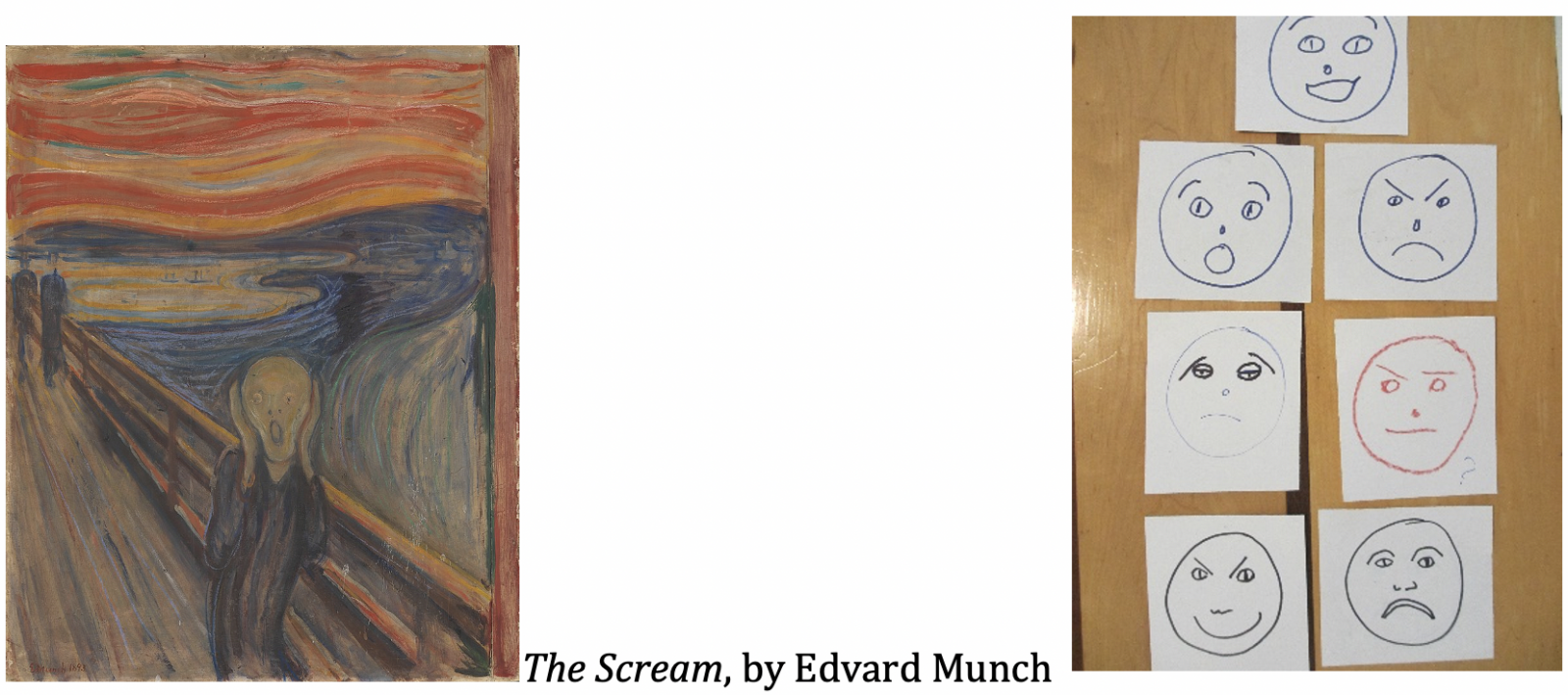
References and Attributions
Lesson written by Cynthia Moring. Draw Paint Academy Website.
Resource Images
|
“The Scream” – Edvard Munch
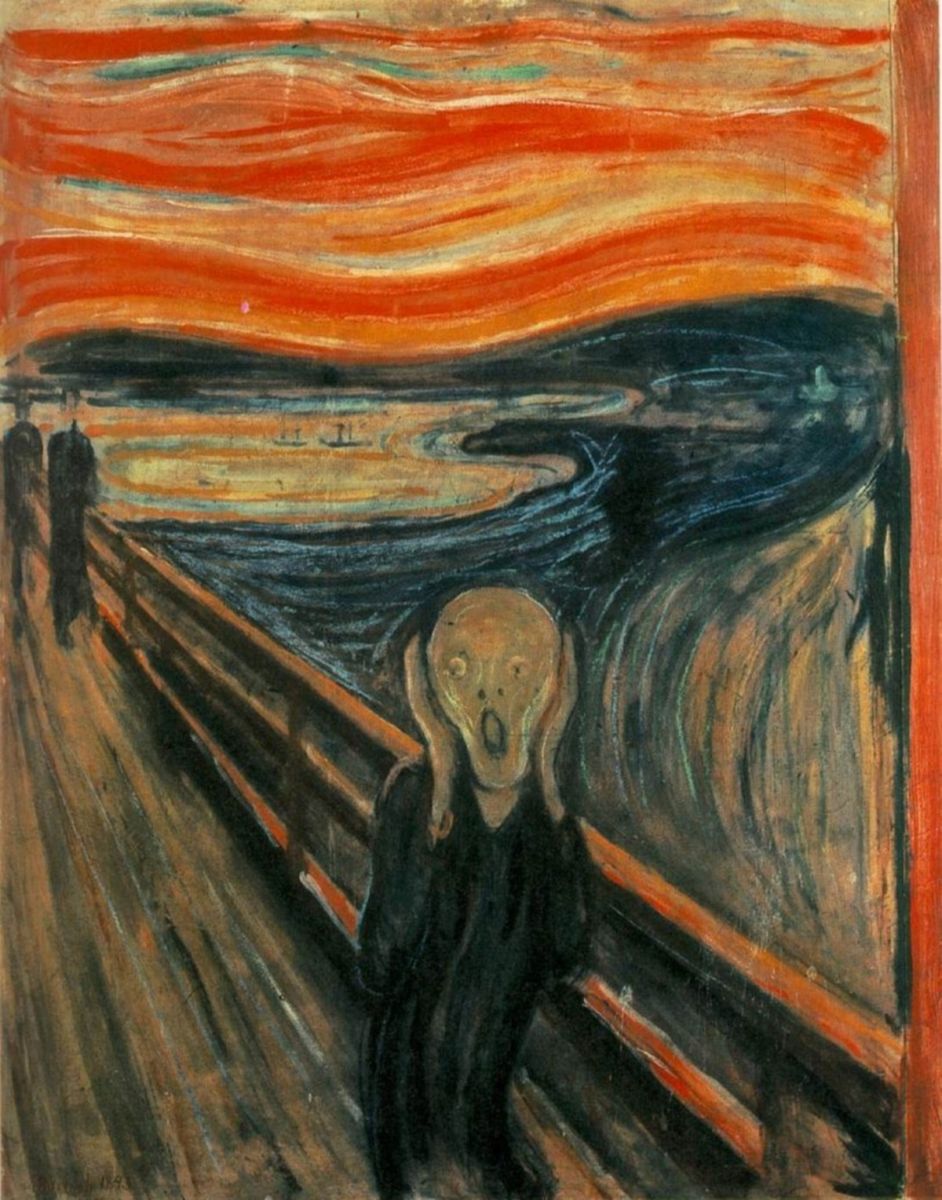
|
“A Starry Night” – Vincent Van Gogh
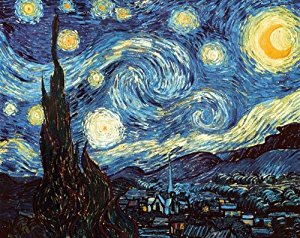
|
“Guernica” – Pablo Picasso
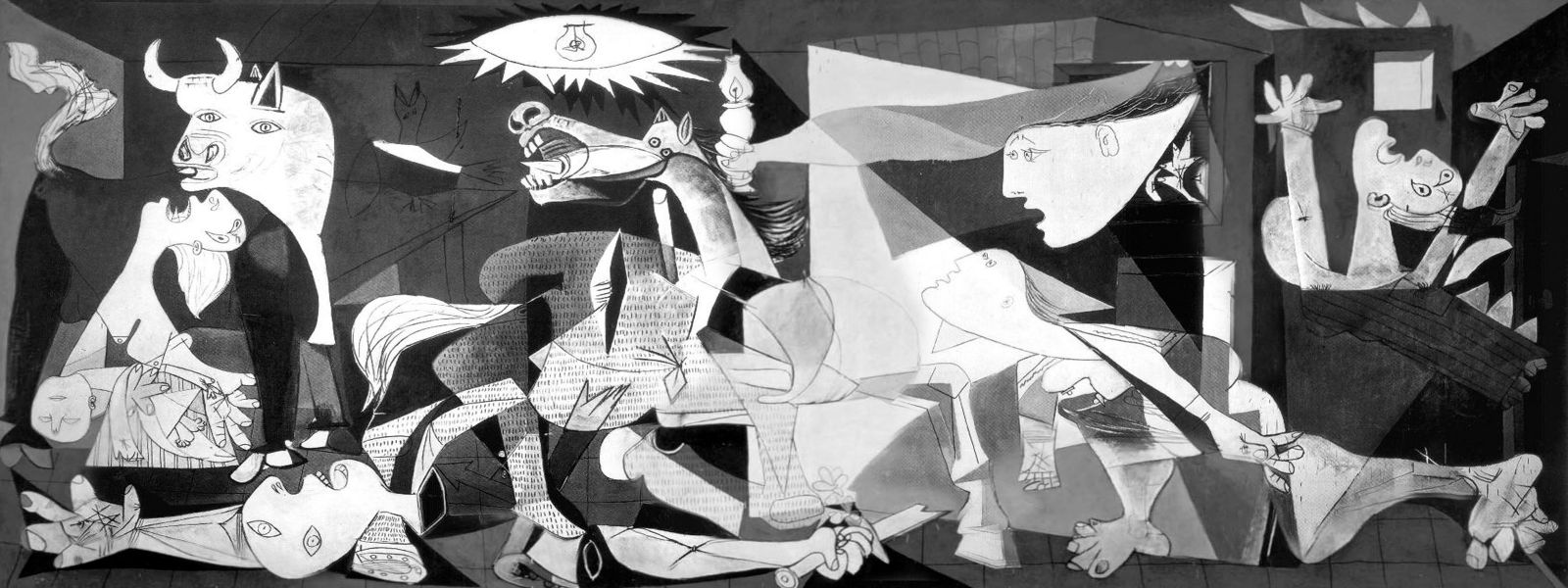
|
“From the Lake” – Georgia O’Keefe
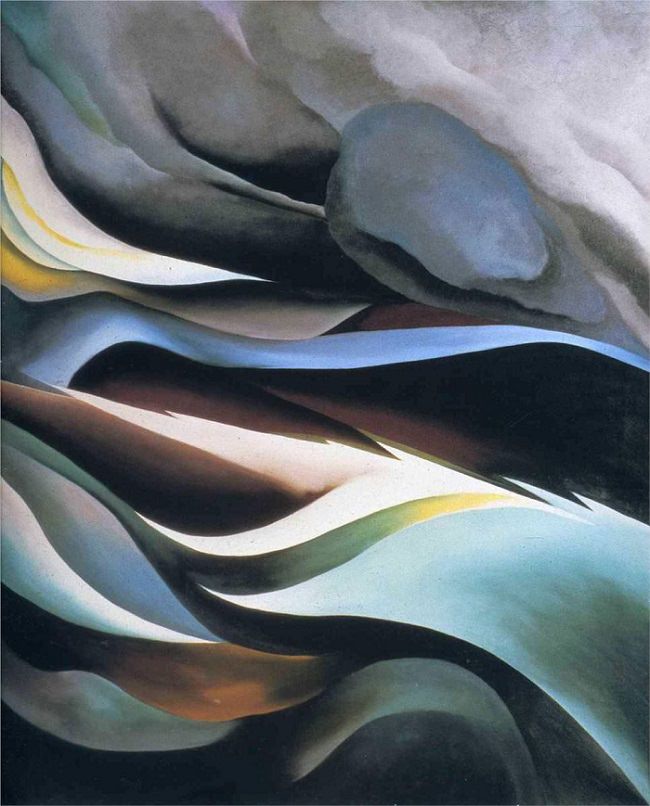
|
Notes for Educators
21st Century Thinking Skills
Questioning, listening with empathy, creating, taking responsible risks, reflecting, observing, making connections, visualizing, sequencing, comparing/contrasting, finding evidence, decision making, fact and opinion, evaluating.
WA State Learning Standards
(VA:Cr1.1.1) a. Engage collaboratively in exploration and imaginative play with materials.
(VA:Cr1.2.1) a. Use observation and investigation in preparation for making a work of art.
(VA:Cr2.1.1) a. Explore uses of materials and tools to create works of art or design.
(VA:Cr2.2.1) a. Demonstrate safe and proper procedures for using materials, tools, and equipment while making art.
(VA:Cr3.1.1) a. Use art vocabulary to describe choices while creating art.
(VA:Re7.1.1) a. Select and describe works of art that illustrate daily life experiences of one’s self and others.
(VA:Re7.2.1) a. Compare images that represent the same subject. This happens if you show more than 1 Expressionist artist.
(VA:Re8.1.1) a. Interpret art by categorizing subject matter and identifying the characteristics of form.
(VA:Re9.1.1) a. Classify artwork based on different reasons for preferences. This happens when you compare abstract with representational art.
(VA:Cn11.1.1) a. Understand that people from different places and times have made art for a variety of reasons.
Arts Integration Opportunities
Vocabulary words can be included in spelling lists.
Social/Emotional Learning: When defining emotions and talking about safe ways to express them.
Please note: These lesson plans are intended for non-profit use only. Use of these plans for commercial purposes should give attribution to the Issaquah Schools Foundation and be accompanied by a nominal donation at www.isfdn.org/donate. Thank you.
Donate Now
